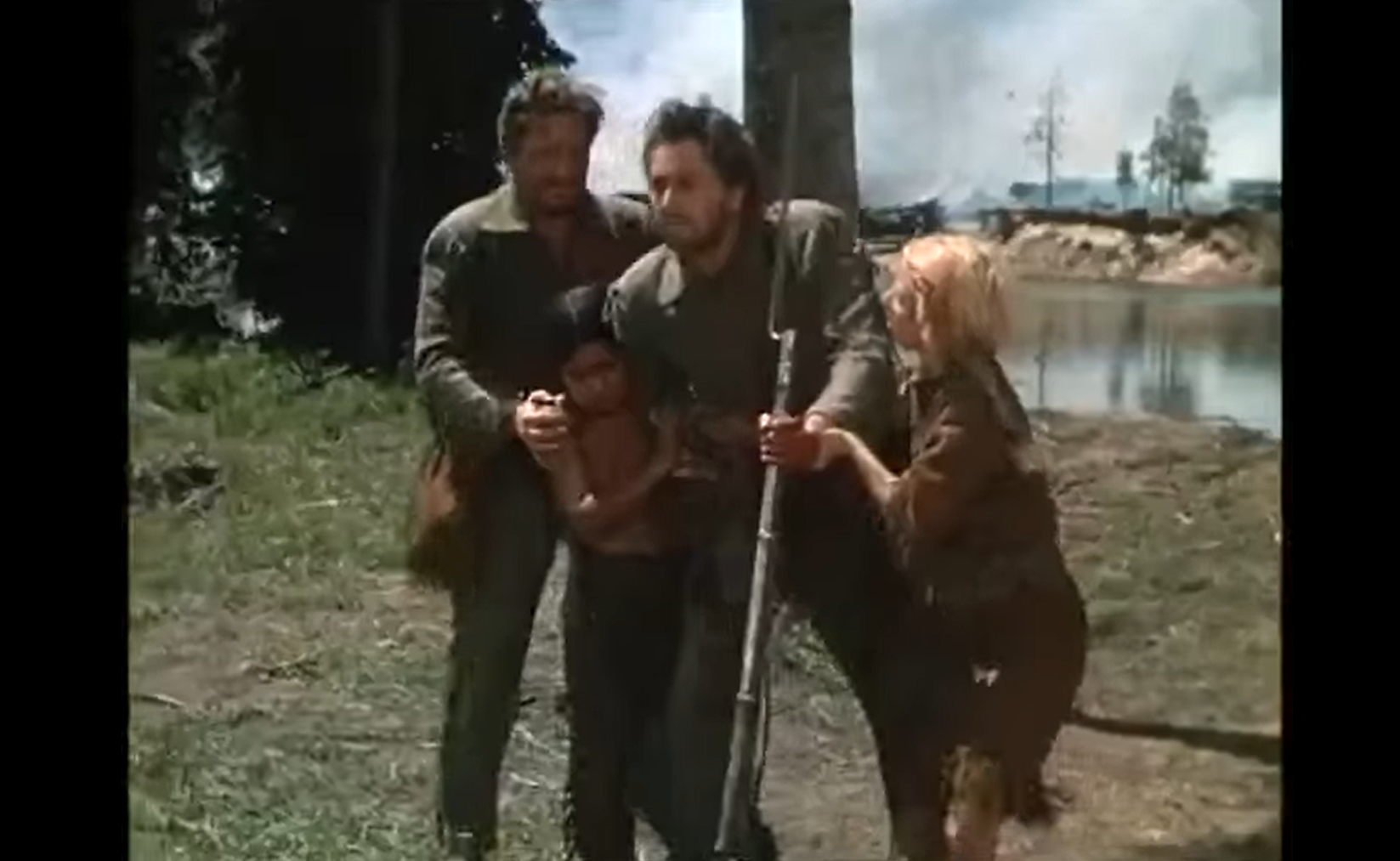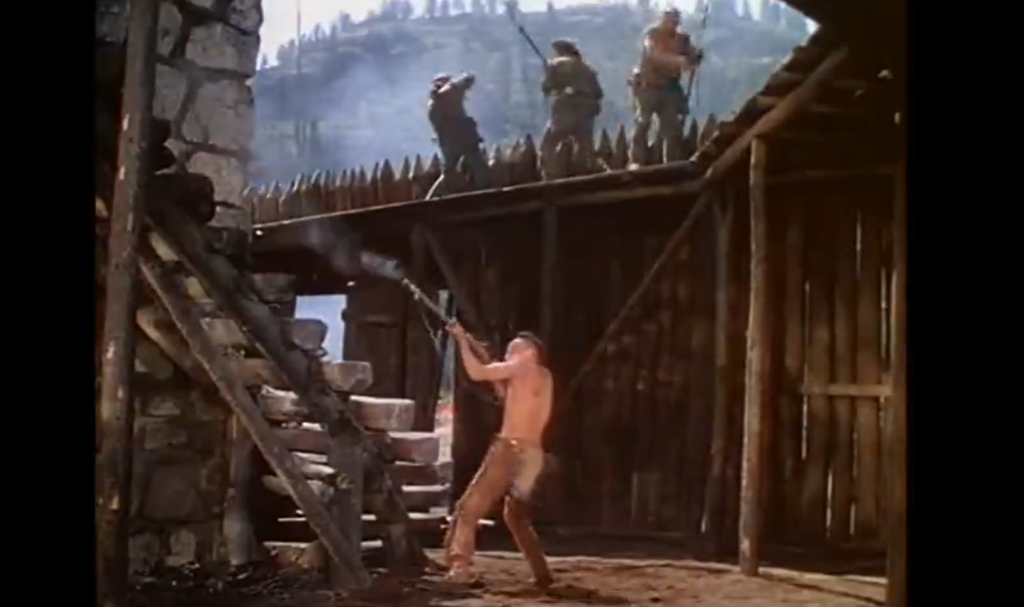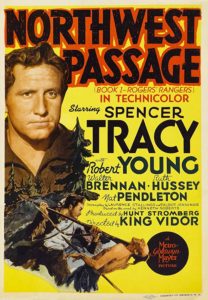|
Genres:
- Historical Drama
- King Vidor Films
- Military
- Native Americans
- Robert Young Films
- Spencer Tracy Films
- Survival
Review:
It’s a challenge to watch this impressively filmed Technicolor wartime adventure tale, knowing that we’re watching a reasonably authentic recreation of the ferocity wrought upon Native populations (albeit often in retaliation for similar treatment) during our quest for continental dominance. While the decimation of various tribes of American Indians — either through warfare or ongoing deculturalization — is now well-known, this MGM production spares no details in sharing how ruthless our tactics were — and how thoroughly we dehumanized and humiliated the tribes we were fighting against. Tracy is stoic but not overly sympathetic in the unenviable role of a tough-as-nails commander directing his men to keep going no matter what, fueling their motivation through no-holds-barred tales of brutal Indian tactics.

As DVD Savant describes it:
[Young] listens as Rogers encourages veterans to tell the new soldiers about Indian atrocities — raping women, chopping men up a bit at a time, braining babies, the works. One description of a prisoner having his ribs severed and pulled out one by one is almost too awful to picture, and seems unthinkably strong for a studio film from 1940. Rogers refers to these outrages to inspire maximum savagery from his troops.
Indeed, retaliation against Indians in this film is relentless, with no room at all for humanization or empathy. As Tracy attempts to help Young survive after he’s been wounded and can barely walk, he yells out, “Bring that [nameless] little Indian boy over here”, then says to the boy (without a hint of irony), “From now on your name is Billy”.

While it’s true, as DVD Savant points out, that “the movie is very successful in communicating the idea that just a few miles past New York, the green forests stretch beyond the horizon, a seemingly limitless frontier for expansion” (the cinematography throughout this location-shot flick is impressive), the film is a hard one to stomach, and will likely only be of interest to those curious about Hollywood’s early depictions of historical American events.
Note: The film’s title is an infamous misnomer, given that the crew never embarks on its quest to find a “northwest passage”; the title was intended for a sequel that never emerged.
Redeeming Qualities and Moments:
- Beautiful Technicolor cinematography

- Fine recreation of historic sites

Must See?
No; this one is only must-see for the curious.
Links:
|





3 thoughts on “Northwest Passage (1940)”
First viewing. Not must-see – but it may be of interest to ‘students’ of American history.
While watching films like this one, I tend to become very conflicted when it comes to the matter of recommending them to others. I’m not a historian so I tend to hesitate when it comes to depictions such as this – esp. those reflecting our turbulent American history.
As with most ‘historical’ films – including film bios – I always lean on recommending that viewers do additional homework, so that their opinions are not based solely on what films present. It’s rare when I come across films about battles which have been highly publicized for taking pains toward authenticity and adhering to the facts.
I feel, periodically, that I have to offer something like that up as a reminder – to myself as well as to others.
That said… and looking at this particular film merely as a document of courage, I was impressed by King Vidor’s direction along those lines. This is not the kind of film I’ve come to expect from Vidor, so I was surprised to see him handling such material.
This response makes sense. When I think about (for instance) introducing my kids to historical dramas (especially as they get older and dig deeper into history as a subject in school), I can’t imagine doing so without instructing them to do additional research and take careful note of when creative liberties were taken, and why.
In a film like this — made during a certain era long before we had collectively begun to understand American perspectives other than those of white settlers — it’s actually instructive to see the reality of how badly Indians were treated. The film is accurate and useful in that sense! But viewers, especially younger or less informed viewers, need careful scaffolding through it.
And yes — it’s very well-filmed.
A lot of older Hollywood films dealing with war or conquest reflect a ‘rah-rah-White America!’ viewpoint… while skimping on reality. I imagine that’s the result of a combination of embarrassment about the truth along with Studios’ intent on making White America feel good about itself (thus, assuring good box office).
It wasn’t, of course, until later decades (generally speaking) when it would become more commonplace for such films to be more truthful.